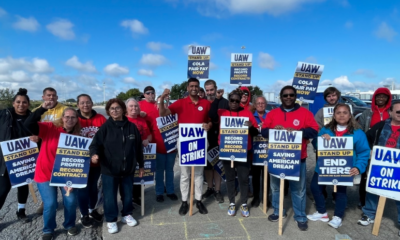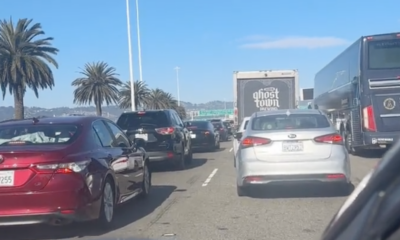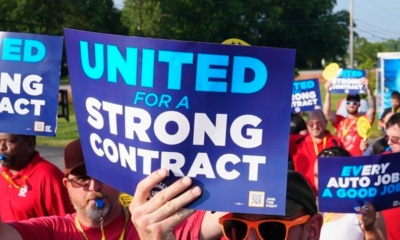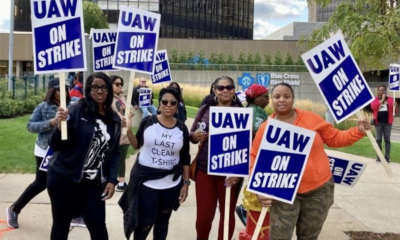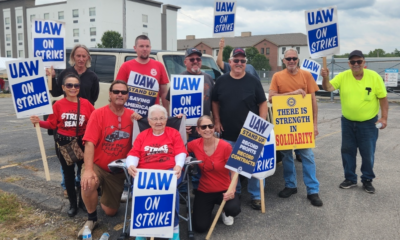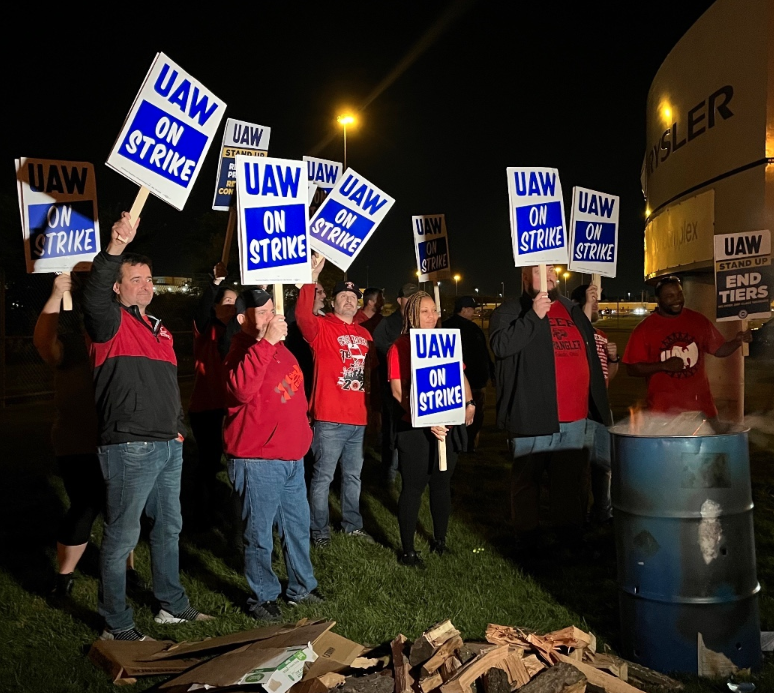
Courtesy of uaw.union/Instagram
The United Auto Workers union is officially on strike against Detroit’s “Big 3” automakers — General Motors, Ford and Stellantis — after their contracts expired Thursday night.
The “stand up strike” strategy announced Wednesday involves members at targeted auto plants striking suddenly, while other members continue working under expired contracts. Members at other plants could be called to strike at a moment’s notice.
The first workers to walk off the job at midnight were Local 2250 at the GM Wentzville Assembly Center in Missouri; Local 12 at the Toledo Assembly Complex in Ohio; and Local 900 at Ford Michigan Assembly Plant – Final Assembly and Paint in Wayne.
The first three walkouts amount to around 13,000 workers, out of the nearly 150,000 represented by UAW at the Big 3.
The goal of the stand up strike is a gradual escalation of actions across the three companies, in order to “keep them guessing on what happens next,” UAW President Shawn Fain said in a video message to members on Wednesday.
“I’m at peace with the decision to strike if we have to because I know that we’re on the right side in this battle. It’s a battle of the working class against the rich, the haves vs. the have-nots, the billionaire class against everybody else,” Fain said.
UAW is demanding double-digit wage increases, more paid time off, and increased retiree pay, along with the restoration of benefits the workers once had, including defined benefit pensions, retiree medical benefits and cost of living adjustments.
The union is also demanding the end of lower-paid employment tiers, a concession the Teamsters recently won in their new contract with UPS, in a deal that was reached under the threat of a strike. UAW is also seeking the right to strike over plant closures, and the “working family protection program,” which would have automakers pay workers to do community service work if their company leaves town.
The union previously filed unfair labor practice charges with the National Labor Relations Board, claiming GM and Stellantis were not bargaining in good faith. Both companies submitted counteroffers to the union last week, which were rejected.
“After refusing to bargain in good faith for the past six weeks, only after having federal labor board charges filed against them, GM has come to the table with an insulting proposal that doesn’t come close to an equitable agreement for America’s autoworkers,” Fain said in a statement responding to GM’s offer.
On Friday, a counteroffer from Stellantis was rejected by the union, which called it a “deeply unfair offer” from “by far the richest” of the three automakers.
“The wage proposal doesn’t make up for inflation, let alone make up for past losses,” the union said in a statement. “They have the money, they just don’t want Stellantis workers to get our fair share.”
According to UAW, GM, Ford and Stellantis made a combined $21 billion in profits in the first six months of 2023, after raking in $250 billion in North American profits over the last decade.
“So what have the Big 3 done with these staggering profits? Instead of rewarding the workers who spent long hours wrecking their bodies on the line to make these profits possible, the Big 3 have funneled billions into stock buyback schemes that artificially inflate the value of company shares,” Fain said in a video message to members last month.
“Record profits mean record contracts,” Fain said.
“Yes, we’re demanding double-digit pay raises,” the UAW said in a statement. “Big Three CEOs saw their pay spike 40 percent on average over the last four years. We know our members are worth the same and more.”
Critics say the union’s demands could force automakers to turn toward more automation, as demand for new cars declines amid high inflation and rising interest rates.
“At the core of this strike are a series of questions that will shape the future of work across industries. Although wage increases are a large portion of what is on the table, questions around length of work week and working hours, worker rights in the face of AI adoption, and the crucial questions of how to manage and care for an aging workforce in an era of increasing longevity are front and center,” said futurist and entrepreneur Elatia Abate, futurist in residence at Paylocity.
“The union’s position that auto manufacturers’ profits have been higher, while accurate, fails to take into account the surge in demand that historically low-interest rates caused. With increased interest rates demand for vehicles has slowed,” said residential and commercial real estate sales expert Joshua Cadillac.
“Auto demand has declined as higher interest rates make both buying and leasing more expensive. This reduced demand may leave the big three in a better position to weather the strike than union officials are banking on, which means this strike could drag on,” Cadillac said.
“As the cost of labor rises the gap between the cost of automation and maintaining employees narrows. The union’s self-described ‘audacious’ demands run the risk of incentivizing the auto manufacturers to seek even more opportunities for automation,” Cadillac said.
TMX contributed to this article.







